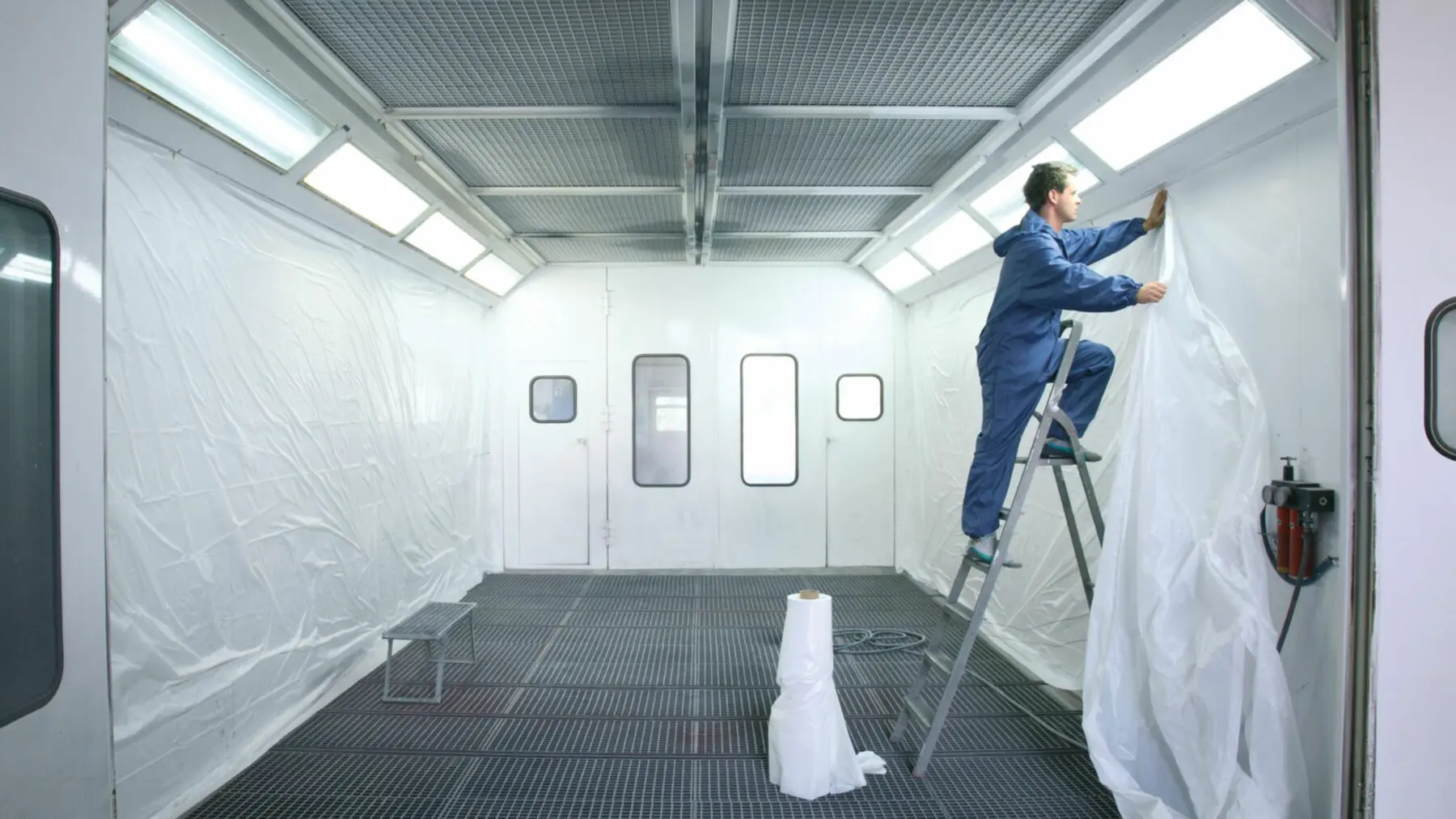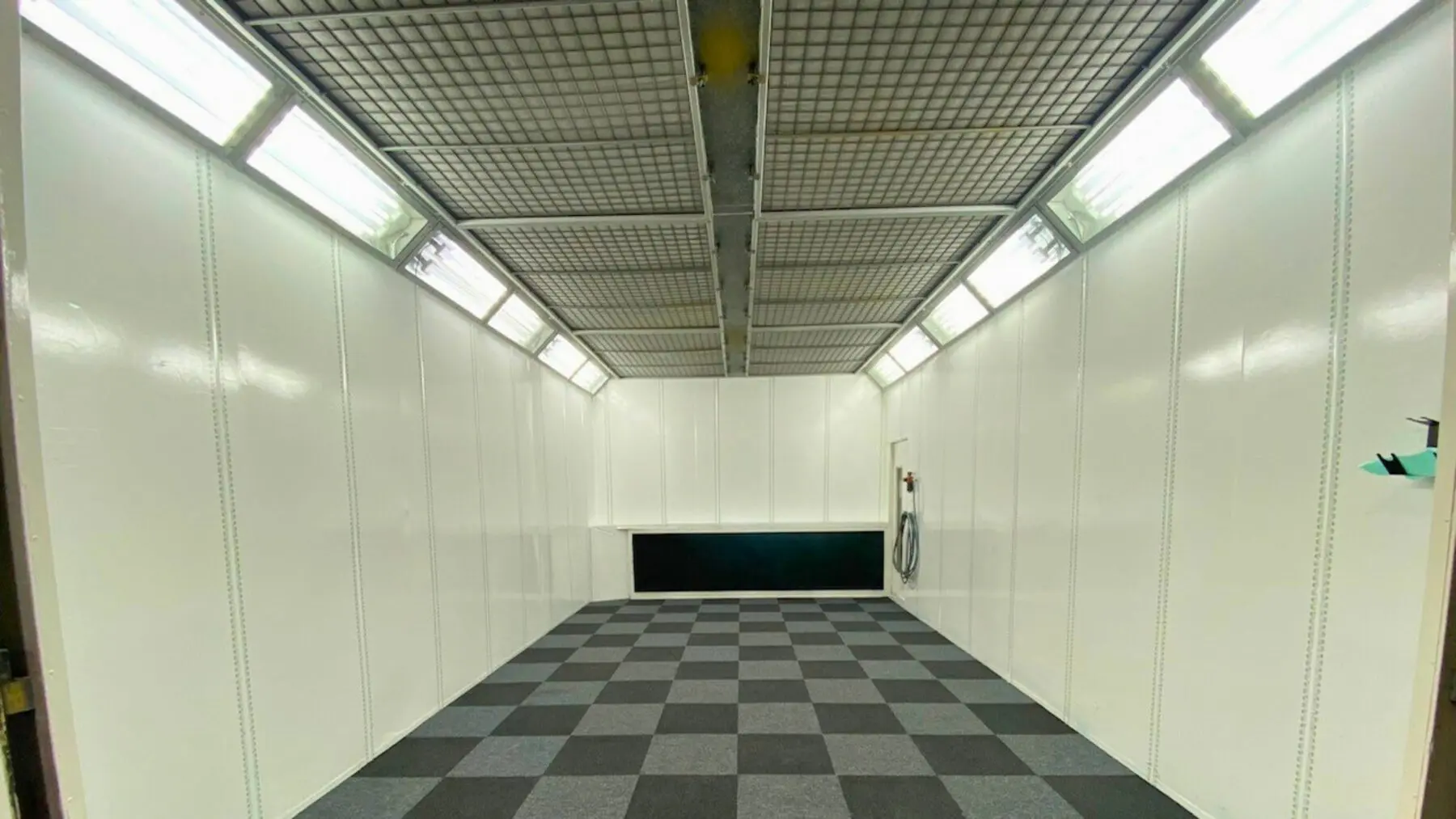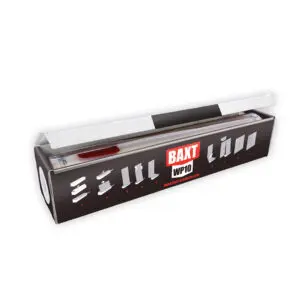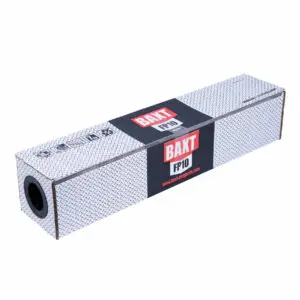
The painting process is the last step in a long string of manufacturing processes, and the potential for an imperfect finish is very high. This often leads to applying a spray booth coating which offers a huge potential increase in quality and efficiency. By using a spray booth paint coating, you can quickly refresh the wall surface giving a much better spraying environment:
- Dust control: Overspray that’s loosely attached to a spray booth wall can easily detach due to a sprayer brushing against a wall, from the turbulence of the dust extraction, or air from a spray gun. A spray booth coating helps to eliminate dust.
- Better air quality: With cleaner walls comes cleaner air. There will be less contaminants in the air and therefore less rework and defects.
- Increased efficiency: When there are less reworks and defects, throughput is a lot quicker with more time finishing and less time refinishing.
- Enhanced cleanliness: A cleaner work environment encourages operator cleanliness and a more efficient workspace.
- Worker morale: A clean, bright spray booth creates a much better work environment where it is easier to achieve a top-quality finish. This boosts employee morale and efficiency.
With this in mind, what is the best type of coating for your spray booth?

Peelable Booth Coatings
Peelable booth coatings are applied as a wet coating, applied by brush, roller or spray. This dries into a stretchy, rubbery film. Once it’s dried, the overspray sticks to the coating and when it’s time for a refresh, you peel off the coating revealing the clean surface underneath.
It’s available in water- or solvent-based versions, in both white (for walls) and clear (for windows and lights).
Pros of Peelable Booth Coatings
- Cost-effective
- Versatile
- Relatively easy to apply
Cons of Peelable Booth Coatings
- The surface of the booth needs to be new and clean
- Can be messy to apply
- Even coverage can be a challenge
- Needs re-applying before using the booth again

Tacky Surface Coating
Tacky surface booth coatings are normally clear, water-based solutions that are applied to a spray booth wall. The coating doesn’t dry and stays tacky which ensures that overspray or contaminants will stick to the coating.
When it’s time for replacing, it needs washing off before being re-applied.
Pros of Tacky Surface Booth Coatings
- Cost-effective
- Versatile
- Easy to use
Cons of Tacky Surface Booth Coatings
- Needs frequent re-application
- Messy to clean up
- Waste needs to be disposed of correctly
- Limited protection

Surface Protection Material (3M Dirt Trap)
Surface protection materials like the 3M Dirt Trap is an adhesive-backed material that is applied to walls and floors of spray booths. Constructed of a non-woven material, it traps dirt and contaminants during painting.
Available in both white and clear versions.
Pros of Surface Protection Material
- Sticks to almost any surface, no matter how bad the substrate
- Easy to remove
- Versatile
Cons of Surface Protection Material
- High initial cost
- Regular replacement needed
- Not the easiest product to apply

Static Polythene Roll
Static polythene rolls are made of a plastic film that has been treated to hold a static charge, meaning it can cling to a surface without adhesives. The static also helps to trap airborne particles.
Pros of Static Polythene Roll
- The static charge makes application and removal very easy
- Very cost-effective
Cons of Static Polythene Roll
- Easily dislodged
- Limited protection
- Can be disturbed by turbulence and air from spray guns

Multi-Layer Wall Coating (BAXT WP10)
Multi-layer wall coatings like BAXT WP10 are made up of several layers of protective films laminated together. They’re applied in a single application (like a wallpaper) and when the top surface is contaminated, it’s simply peeled off revealing the clean surface underneath. Ideally applied to brand new spray booths before use.
It’s available in a number of versions, including white, clear and other versions for floors, walkways and glue rooms as well.
Pros of Multi-layer Wall Coating
- The ultimate in booth protection
- Very easy to refresh the entire spray booth
- Consistent cleanliness
- Minimal downtime when removing layers
Cons of Multi-layer Wall Coating
- Higher upfront cost
- Required careful application
- Must be applied to new or clean surfaces
Conclusion – what spray booth paint coating should I use?
Achieving the perfect spray booth paint finish is a crucial step, but not without its challenges. Spray booth coatings significantly improve the process, balancing quality with efficiency. The coatings we’ve discussed range from wash-off tacky coatings, to multi-layer options like BAXT WP10, each with their own advantages and constraints.
You’ll need to carefully consider your own specific needs, whether it be cheap and quick installation or an up-front investment in time and money, to see which is the best product for you.
Often, though, the initial investment in time and money for a quality system pays dividends in the long run when considering the high cost of rework and defects resulting from poor working conditions.
-
 BAXT GP10 7 Layer Glue Room Protection NEW£418.80 Incl. VAT£349.00 Excl. VAT
BAXT GP10 7 Layer Glue Room Protection NEW£418.80 Incl. VAT£349.00 Excl. VAT -
 BAXT WP10 5-Layer Spray Booth Wall Protector£538.80 Incl. VAT£449.00 Excl. VAT
BAXT WP10 5-Layer Spray Booth Wall Protector£538.80 Incl. VAT£449.00 Excl. VAT -
 BAXT FP10 5 Layer Floor Protection£298.80 Incl. VAT£249.00 Excl. VAT
BAXT FP10 5 Layer Floor Protection£298.80 Incl. VAT£249.00 Excl. VAT




